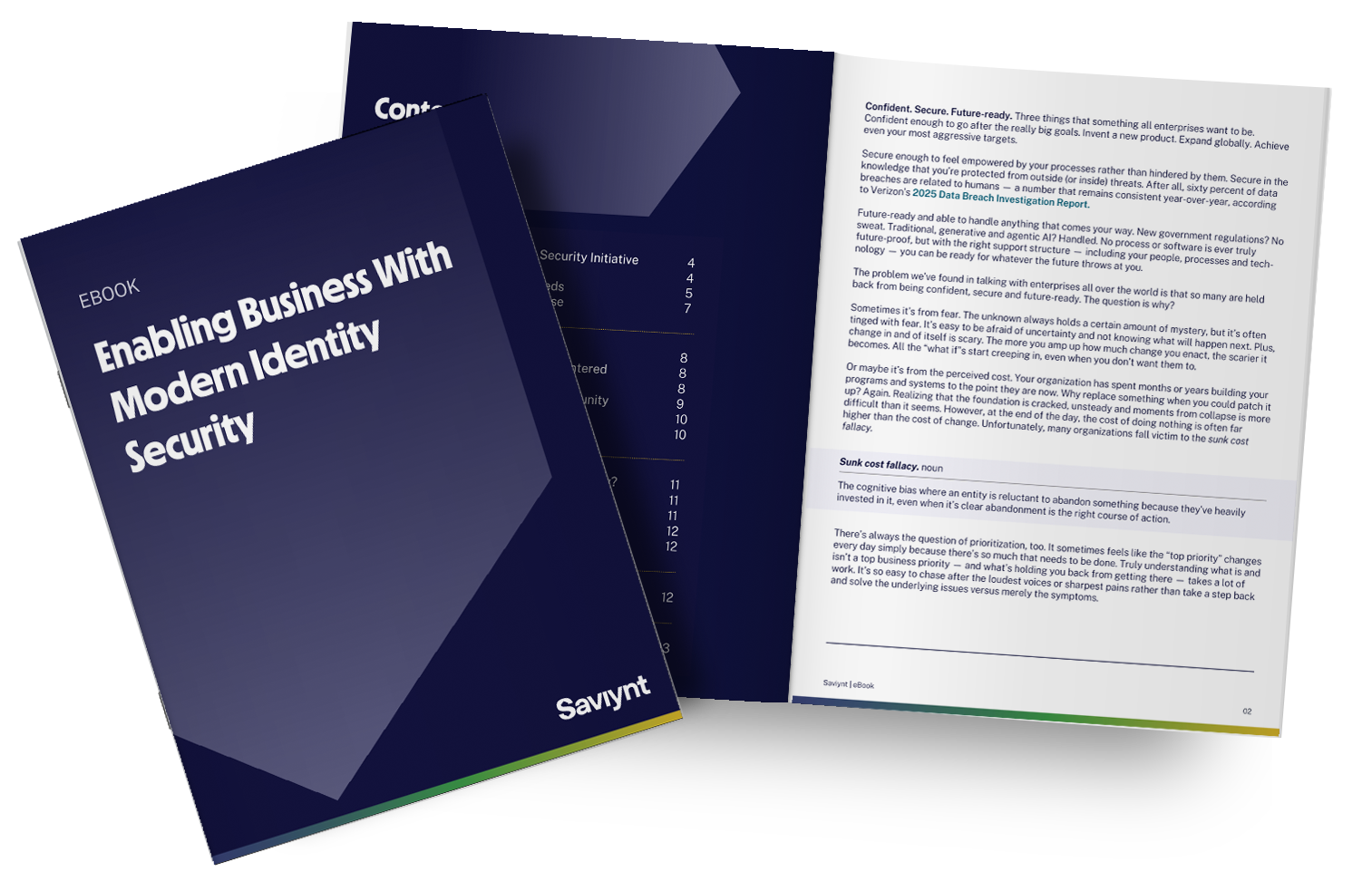EBOOK
Enabling Business With Modern Identity Security

For your identity security program to succeed, you must build it on the right foundation. One of the many problems of traditional identity governance tools is their highly fragmented and outdated nature. Every new problem often requires an entirely new software, each opening a hole in organization's security that yet another solution aims to solve.
What enterprises are left with is an unsteady, taped-together tech stack that a single reused password or overprovisioned account can break wide open. All the while, technology and business has evolved, and they can't yet take advantage of it. Regulatory restrictions and requirements have increased. Work happens wherever and whenever it can, across geographies, time zones and by humans and non-humans alike. As organizations were busy putting out fires, their security perimeter essentially evaporated.
In this eBook, we discuss how enterprises can finally make the move to modern identity security, including how to approach the program from the beginning. Learn from other security leaders just like you who have been successful with their own migrations.